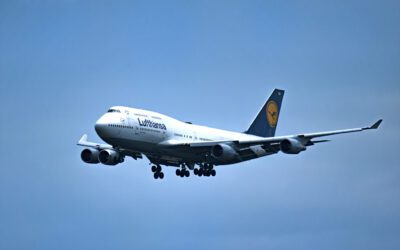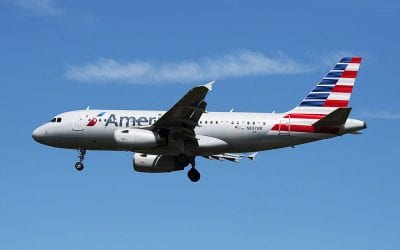Later this month the northern hemisphere will usher in summer, heralded by the summer solstice. Of course, on that date, winter starts with the shortest day of the year in the southern hemisphere, but it will be summer up here and time for vacations.
With the strength of the US dollar vs. the Euro, Europe is expecting a large influx of American travelers flying across the Atlantic Ocean this summer, many flying for the first time anywhere.
For those flying for the first time, or with just a little experience, traveling across an ocean can be daunting, especially if you are unfamiliar with 21st century aviation, and unable to separate some persistent myths from reality.
So here goes a bit of myth busting.
Myth: The recirculated air in airplane cabins is full of germs. FALSE. The air recirculated in plane cabins goes through hospital quality filters capturing 95 percent of airborne microbes. Moreover, the recirculated air, used to make it easier to control cabin air temperature, is constantly mixed with outside air, allowing the cabin air to completely changeover every few minutes.
Myth: Passenger seat pockets and tray tables are regularly cleaned. FALSE. While the airlines do clean out the trash from airplane cabins, including the seat pockets whenever possible, they don’t clean thoroughly.
Over the years I’ve found nail clippings, pizza crusts and worse yet, a soiled diaper in the seat pocket in front of me. I don’t put anything in seat pockets. Just five years ago, University of Arizona researcher Jonathan Sexton, tested tray tables from some of the major US airlines and found 60 percent of them tested positive for the MRSA superbug. As a comparison, he tested the New York City subway and found just 11 percent of those samples were positive. Before using my tray table, I wipe it thoroughly with a disinfectant wipe.
TIP: Those blankets you think are clean, all nicely wrapped in a plastic bag, aren’t. The ground crew merely folds them after each flight and places them in a new plastic bag. Don’t use them.
Myth: Airplane lavatories are sanitized prior to each flight like hotel bathrooms. FALSE. I don’t know about hotel bathrooms being sanitized, but airplane lavatories certainly aren’t. Generally, hundreds of people use an airplane’s lavatory daily. The waterless toilets are havens for germs and viruses, and flushing often sprays who knows what, into the air.
While I use airplane lavatories, I use a hand sanitizer rather than washing with the sink water, flush the toilet only with the lid closed, and touch everything only with a paper towel.
Don’t drink the water from the bathroom faucet. Tests over the years have shown the water tanks in planes are often hotbeds of E.coli.
TIP: If you want to brush your teeth or drink water on any flight, purchase a bottle of water in the airport after you pass through security, or get one from a flight attendant. Only drink or use bottled water on a plane.
Myth: Any hole in an aircraft will eventually tear the plane apart. FALSE. In 2011, for example, a six-foot-square hole opened in the roof of Southwest Airlines 812 while it was at 34,400 feet. Decompression was rapid; explosive, in fact. The plane made an emergency descent as the oxygen masks came down. No one was sucked out the hole. No one died. Only two people were hurt, and they suffered minor injuries from the accident. The plane landed safely. There are other instances of planes landing safely after the aircraft’s pressure hull was compromised during a flight.
TIP: If the plane depressurizes and the oxygen masks are deployed, put on one immediately before you help anyone else, including your children or an elderly person traveling with you. (At altitude, it only takes 15–20 seconds before you’ll likely pass out.) Once you’re safe, you can help them. If you wait to don the mask, you might pass out and be unable to assist anyone.
Myth: Crazy passengers who attempt to pry open airplane doors are a serious threat to aircraft safety. FALSE. While such highly agitated passengers must be reseated so they don’t accidentally hurt themselves, other passengers or crew members, it’s impossible for them to open a cabin door while the plane is at cruising altitude and the cabin pressurized. The difference in the interior and exterior air pressure is too great for a person to handle.
Myth: Wearing your seat belt can hurt your chances of surviving a plane crash. FALSE. It’s possible that wearing a seat belt might slow you down for a few seconds as you try to escape from a crashed plane, but it will save you from being launched forward in the cabin from your momentum when the plane quickly stops during a crash. Seat belts in planes have shown they save lives.
After many years working in corporate America as a chemical engineer, executive and eventually CFO of a multinational manufacturer, Ned founded a tech consulting company and later restarted NSL Photography, his photography business. Before entering the corporate world, Ned worked as a Public Health Engineer for the Philadelphia Department of Public Health. As a well known corporate, travel and wildlife photographer, Ned travels the world writing about travel and photography, as well as running photography workshops, seminars and photowalks. Visit Ned’s Photography Blog and Galleries.



